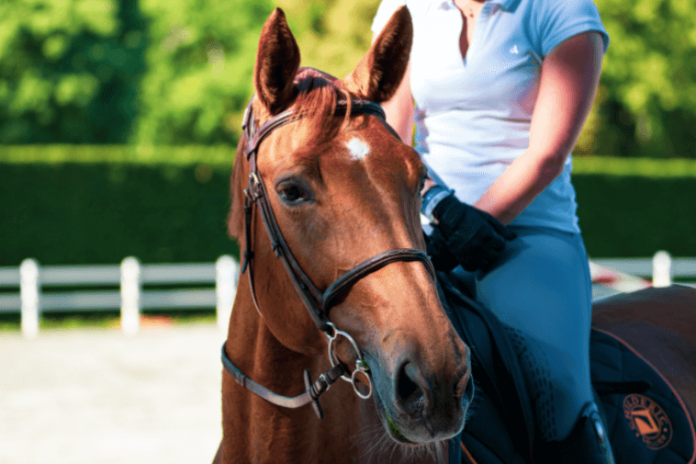This article is written by Anushka Singhal, a student of Symbiosis Law School, Noida. In this article, she tries to throw some light on equestrian law and developments therein across the globe.
Table of Contents
Introduction
Equestrian or equine law is the law regarding horses and the activities related to them. Horse racing is a very popular sport throughout the world. To regulate horse racing, different countries have their own Equestrian Laws. In India, we have made betting illegal except for the betting in horse races. Horse racing is allowed as it is considered a ‘game of skill’. Equestrian law covers various factors like the safety of the riders, doping in equestrian sports, the legality of horse races, etc.
Equine Law in India
In India, wagering agreements are illegal. Section 30 of the Indian Contract Act,1872 says that the agreements by wager are void. This section lays down a proviso stating that agreements entered into for the purpose of horse racing are valid. Agreements entered into for horse racing were also considered as agreements by way of wager till 1996. In 1996, the Hon’ble Supreme Court gave its landmark decision in Dr KR Lakshmanan v. State of Tamil Nadu and Anr. (1996). In this case, the Tamil Nadu government brought horse racing under the ambit of gambling laws. The petitioner being a horse club owner challenged this decision of the Tamil Nadu government in the Supreme Court. The Court held that horse riding is a game of skill as it depends on the ability and training of the horse trainer. The Court also went on to explain further and said that horse racing involves skill at various stages. First of all, selecting the perfect breed for the race is a skill in itself.
Then the horse is given extensive training with the help of a skilled trainer. The jockey himself is properly trained and thus horse racing is not a game of chance and should be out of the purview of the Madras Police Act,1888 that banned gambling. Horse racing may include certain instances of chance i.e. when the horse becomes unruly, but in totality, horse racing is a skill-based game only. In India, there are no separate laws regarding horses and all the animal-related laws apply to them. When it comes to horse racing, it is permissible in India as held by the Apex Court in the case of Dr KR Lakshmanan.
Equine laws in the US
Equestrian Liability Act
The United States of America has a well-defined equestrian law. The horse racing industry of America is very well developed and regulated. In the US, several states have their Equine Liability Acts which regulate the equestrian activities in that particular state.
The statutory language of the equine activity law seeks to protect persons or organizations, engaging in an equine activity, from liability for an injury resulting from a horse-related activity. But this protection is not absolute and extends only to equestrian-related activities. Therefore whenever a horse-related mishap occurs in this state the first question that arises is whether it was an equestrian activity? Horse racing is a very popular concept in the US and thus the protection of the horse persons is the prerogative of the club owners. It is interesting to note that the state symbol of New Jersey is a horse. The courts usually use the strict interpretation of the statutes. There was a landmark case in New Jersey that made the courts consider the validity and usefulness of the equestrian protection laws. It was the case of Hubner v. Spring Valley Equestrian Center(2010) after which the New Jersey Law Review committee started looking into the ambiguity of this particular law. The commission proposed certain changes in the act. It said that the 1) definitions, 2) assumption of inherent risk, 3) operators’ duties, and 4) the posting of warning signs should be changed.
Some recent case laws and developments
There have been a plethora of cases in the past two or three years that point out that equine law has become popular and also lays down the recent developments. Cases in 2019 and 2020 created a body of law related to injuries and the scope of risks inherent in equine activities.
Franciosa v. Hidden Pond Farm, Inc.
In this case, a thirteen-year-old girl was riding a horse wherein she got injured. She had been undertaking training since she was of the age of eight years. When she got injured, she was on a free ride i.e. she was not under the supervision of the instructor. The instructor was not liable for leaving her alone and the Court said that as the girl engaged herself in an ‘inherently risky activity,’ the trainer is not liable.
McCandless v. Ramsey
In this case, McCandless was standing on a track inside the riding arena when she was injured by Ramsey’s ten-year-old daughter who was riding a horse. McCandless was not able to get damages as the Court held that an equine’s behaviour is unpredictable and Ramsey’s daughter was not at fault when the equine went out of control. The Court also rejected the claim of McCandless where she said that Ramsey was riding in the wrong area. The Court said that it was McCandless who was standing in an area where she knew equine related activities are most likely to happen.
Some important definitions
- Equine animal means “a horse, pony, mule or donkey.”
- Equine animal activity means “any activity that involves the use of an equine animal and shall include selling equipment and tack; transportation, including the loading and off-loading for travel to or from a horse show or trail system; inspecting, or evaluating an equine animal belonging to another person whether or not the person has received compensation; placing or replacing shoes on an equine animal; and veterinary treatment on an equine animal.”
- In equestrian activities, a participant means any person who participates in an equestrian activity. He can either be a professional or an amateur. Also, anyone accompanying the participant or coming to the equestrian property is also considered a participant. It is not necessary that that person is necessarily an invitee or has come thereafter buying the tickets i.e by paying consideration.
Equestrian immunity statutes
The equestrian immunity statutes show a variety of options for defining persons that may qualify for immunity from liability. If a person falls under the given statutes then he is not liable for an injury caused due to an equestrian activity. If a general standard of care is not adopted then the person is liable but if a person has adopted reasonable care and also falls under the immunity, then he is not liable. In the case of Muller v. English (1996) wherein a horse kicked the plaintiff and the plaintiff filed a case against the defendant, the defendant was not held liable. The argument by the plaintiff that if the horse was violent, it should have been marked with a red ribbon was not accepted. The Court held that it was a natural animal behaviour. The immunity provided under the immunity statute can be broken down if the conduct of the person claiming immunity is full of blemishes. In Shandy v. Sombrero Ranches, Inc.,(1974) the plaintiff was learning to ride a horse; the agent appointed therein failed to assist the plaintiff when she lost control of the horse. In this case, the agent was not able to claim immunity as he was negligent.
Sports responsibility statutes
These statutes provide that a participant in an equestrian activity is liable for the consequences. Operators are only liable when they are negligent or when their conduct is not appropriate. There are several duties for a service provider and if he fulfils those duties he is not liable. Sports participants too have certain duties and they also need to abide by them.
Equestrian helmet laws
Equestrian activities are considered to be more dangerous than skiing, rugby, automobile racing, etc. Thus, to reduce the risk involved in equestrian activities, several US states have formulated their own equestrian helmet laws. The states of New York and Florida are leading this initiative. Currently, there are four equine helmet laws in the US in New York, Florida, Norco and California. The laws in the four cities differ as each state has its own helmet-wearing criteria.
New York
It was the first state to formulate equine safety laws. Here, a helmet is compulsory for a rider below the age of eighteen years. Failure of a rider under eighteen years of age to wear a helmet will result in a civil fine of two hundred and fifty dollars or less. Here the non-compliance with the helmet laws will not bar a person from claiming damages from an injury.
Florida
In Florida, wearing a helmet is necessary for a person under the age of 16 years when he/she is riding an equine animal in a public place. However, it is not compulsory to wear a helmet in a private area. The helmet should pass the standards set by the American Society of Testing and Materials for protective headgear.
Bainbridge Island, Washington
In Bainbridge, every person is required to wear a helmet. It is compulsory to wear a helmet in a public place. Failure to wear a helmet may result in a civil fine not to exceed ten dollars, however, the first infraction only results in a warning. An exception can be granted to those persons who submit a doctor’s note to the authorities stating that the use of a helmet may cause health problems to the person wearing a helmet.
Norco, California
Here it is compulsory for certain riders under the age of 18 years to wear a helmet. It is compulsory to wear a helmet when riding in a public area. Further, no person may knowingly rent or lease an equine to a rider under the age of eighteen without verifying that the rider has an appropriate helmet or providing such a helmet for the rider to wear.
Effect of equestrian helmet laws on equestrian liability
New York is the only state which lays down that the equestrian liability laws affect the equestrian helmet laws. Otherwise, the other three states leave everything to the judicial interpretation. When an equestrian professional fails to comply with the regulations, he is held liable. In the case of Snyder v. Kramer (1983), the equine provider failed to provide an appropriate saddle for riding the horse. He was held liable as he did not meet the safety standard. On the contrary, if a rider himself fails to comply with the safety standards then his claim is definitely affected. Even when a provider has done wrong, the claim of a rider not complying with the helmet laws would be reduced as he had contributed to the negligence.
Horse Racing Integrity and Safety Act
This is the latest development in the field of equestrian law in the United States of America. This Act was passed in the senate in the year 2020. This Act lays down the provisions for the establishment of a uniform national medication program, encouragement of fair competition, modernization of regulations across state lines and prioritization of the safety and welfare of the people and equine athletes. The Act lays down the provisions for the establishment of a ‘Horseracing Integrity and Safety Authority.’ Doping is also one of the major problems in equestrian law and thus this Act lays down the provisions for the establishment of an ‘Anti-Doping and Medication Control Standing Committee’. The jockey club of the USA supported this Act as they felt that the safety of the horse and the rider is of paramount importance. The United States Trotting Association opposed the Act as it felt that the Act would create an unnecessary layer of federal oversight, additional regulations, costs, fees, and resultant job losses. Now it will be interesting to see the implications of this Act on the equine industry.
Developments in the concept of vicarious liability
Recently some decisions of the American Supreme Court led to a new development in the field of equestrian law. The recent developments by the Court’s decision provide a respite to the employers. Two cases provided us with a new insight into the concept of vicarious liability in the field of equestrian law. These decisions are particularly important for the equestrian industry. These decisions provide respite to an equestrian employer in those cases wherein he has employed an independent contractor. In such cases, he would not be held liable. Similarly, in the cases where the employee does something which is out of the scope of employment, the employer would not be liable. Let us discuss the two case laws that led to a certain development in vicarious liability and in turn affected the equestrian law.

Barclays Bank plc v. Various Claimants
In this case, about 126 claimants brought group litigation against the defendant bank. They alleged that there was sexual misconduct by Dr Bates during the medical examination for the selection process for the bank. The complainants, in this case, were the existing employees of the bank while some were about to become the employees of the bank in the future. The High Court held the bank vicariously liable for the act of Dr Bates even though he was not an employee but an independent contractor. The case went to the Supreme Court. It overturned the decision of the High Court and held that the bank was not vicariously liable. The Court observed that as Dr Bates was permitted to carry out his own independent examination, he was not an employee but an independent contractor. The Court also observed that he was not ‘akin to an employee’ and thus there was no scope for the bank to be vicariously liable. The equestrian employers will take a sigh of relief now as this case law will help them escape from being vicariously liable for such employers.
WM Morrison Supermarkets plc v. Various Claimants
This case also dealt with the aspect of vicarious liability. Herein an employee of Morrisons unlawfully disseminated the data of other employees to frame someone. Morrisons was held vicariously liable for the actions of the employee, Mr Skeleton. The Supreme Court held that though Mr Skeleton was an employee of Morrissons, his act was out of the purview of his scope of employment. The Court declared Morrisson not liable. This case would also assist the employers wherein their employees have gone out of their scope of employment and such employers would not be vicariously liable. For example, If an employee of an equestrian service provider, who was appointed for training, feeds the horse something and as a result, the horse caused injury to the rider, the service provider would not be held liable as feeding the horse was out of the scope of the trainer’s employment.
Equine laws in Australia
The equine laws in Australia are not as wide as they are in the US. The Civil Law (Wrongs) Act, 2002 lays down the provisions for equine liability. It provides provisions for the liability of a person. This law regarding equine activities is laid down in Schedule 3 of the Civil (Law) Wrongs Act 2002.
Schedule 3- Equine activities
Definitions
- Equine- It means a horse, mule, donkey or, hinny.
- Equine activity- They include an equine show, parade, competition, a training activity, a boarding activity, involves riding others equine for the purpose of reward or for examining, an activity sponsored by an equine sponsor like hunting or pacing horseshoes on equine. Also polo, showjumping, steeplechasing, dressing and performance riding.
- Inherent risks- They include the propensity and unpredictability of the equine. It also includes surface damages and collisions. Also, a participant’s negligent behaviour affecting other participants is included here.
Limitation on liability for death or injury of a participant
It lays down that an equine activity sponsor or organizer is not liable for an injury caused to an equestrian rider. But that person is liable if-
- The injury is caused by faulty equipment or track
- The defendant failed to assess the participant’s ability
- The land or facilities provided were dangerous
- The defendant showed reckless behaviour
- The defendant intentionally caused injury to the participant
Along with it under this schedule, there is also a necessity of a warning notice. A clear warning notice should be displayed at the equine activity area and it is the duty of the equine activity provider or the sponsor to abide by these rules.
Possible compulsory Hendra vaccination of horses
The Australian Equestrian Federation has recently allowed the FET veterinary committee to discuss the proposal for compulsory horse vaccination in the Hendra affected areas of Australia. The horses in Australia have been widely affected by this virus. The cases started roaring up in 2014 and since then there has been a demand for a law on compulsory vaccination. Till now, there has been no such legislation and the government has given the discretionary powers to the event organisers to decide whether they would admit unvaccinated horses in their events. The event organisers, as well as participants, are advised to follow the Biosecurity Act, 2014 but still, there is no compulsion for vaccination. The government can, no doubt, make it compulsory in the future.
Equine laws in the UK
The United Kingdom has the Equine Identification Regulations Act. Scotland, Wales, Northern Ireland and England all have their separate laws. This regulation applies to a wild or semi-wild equine that is of any age or is being transported from one place to another for a purpose other than slaughter. The equine laws are not so defined in the UK as they are denied in America. Other laws of negligence, the Sale of Goods Act, animal laws, etc. apply to equine animals and equine racing.
Conclusion
Equine law is not so popular throughout the world. Countries promote equine activities and there are elite horsing clubs. But very few countries have equine laws. Equine lawyers and firms can assist in selling and buying equines. In India, particularly, there is a dire need for equine laws, seeing the growing equine industry. One needs to understand that if there are activities then there should be laws too otherwise it will lead to an absurd situation.
References
- https://www.legislation.gov.uk/uksi/2018/761/contents
- https://uknowledge.uky.edu/cgi/viewcontent.cgi?article=1047&context=kjeanrl
- https://heinonline.org/HOL/LandingPage?handle=hein.journals/vse13&div=12&id=&page=
- https://heinonline.org/HOL/LandingPage?handle=hein.journals/shjsl12&div=8&id=&page=
- https://www.mondaq.com/australia/constitutional-administrative-law/278486/compulsory-vaccination-of-horses-against-hendra-virus–what-you-need-to-know
- https://www.gtlaw.com/en/insights/2020/8/the-horse-racing-integrity-act-will-it-cross-the-finish-line
LawSikho has created a telegram group for exchanging legal knowledge, referrals and various opportunities. You can click on this link and join:
https://t.me/joinchat/J_0YrBa4IBSHdpuTfQO_sA
Follow us on Instagram and subscribe to our YouTube channel for more amazing legal content.
 Serato DJ Crack 2025Serato DJ PRO Crack
Serato DJ Crack 2025Serato DJ PRO Crack










 Allow notifications
Allow notifications



